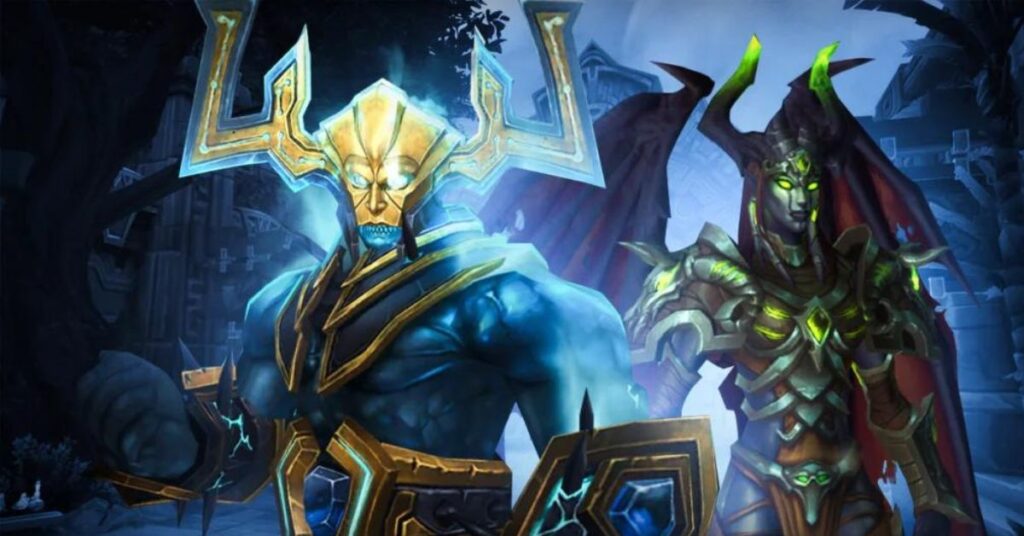Raiding in World of Warcraft is like putting together a puzzle. Each piece, or player, must fit perfectly to complete the picture, or in this case, defeat tough bosses. A good raid team needs the right mix of players: some who can take a lot of damage (tanks), some who can heal (healers), and others who deal a lot of damage (DPS). The exact mix can change depending on the raid or boss fight. Some bosses might be easier with more players who attack up close, while others might need more who can attack from a distance.
This analysis will help you understand how to build a successful raid team. We’ll talk about what to think about when picking players for each role and how different classes bring unique strengths to a raid. Whether you’re leading a raid or just starting with high-level content, knowing how to put together a strong team is key to doing well in these hardcode PvE instances. However, if you’re a solo gamer, can’t find a decent guild, or just don’t have time to play hard, we’d recommend buying a WoW Raid carry. It will save you a lot of time and allow you to play with the top-tier players of the community in the best comps that even exist.
Making a Perfect Raid Comp: Tips from PRO-Gamers
Creating a successful raid composition in World of Warcraft often involves balancing a variety of classes and roles to tackle different challenges. Each raid may require a slightly different setup, but there are general principles that can help guide the formation of an effective raid group.
Key Roles and Ideal Numbers:
- Tanks: Essential for absorbing damage and managing enemy attention. A typical raid might include 3-4 tanks for managing multiple enemies or for backup in case of high damage or death.
- Healers: Crucial for keeping the raid alive. Depending on the raid’s difficulty, having 8-9 healers allows for a steady healing output and coverage for different raid groups.
- DPS (Damage Per Second): The bulk of the raid. Efficient DPS is split between melee and ranged classes. A balanced raid might include Fury Warriors and Frost Mages for high damage output, along with a mix of other DPS classes like Rogues and Warlocks.
Class Considerations:
- Fury Warriors and Frost Mages: Known for their high DPS, crucial in raids where damage output is critical.
- Warlocks and Hunters: Useful for their specific roles like crowd control and pulling. However, in some setups, like the Blackwing Lair (BWL), you might want to limit their numbers as they offer less burst damage compared to Fury Warriors and Mages.
- Utility Classes: Classes such as Druids, Paladins, and Shamans bring versatility with their ability to switch between healing and other roles, providing buffs and other utilities.
Adjusting for Raid Requirements:
- For complex raids like BWL, it’s recommended to adapt the composition based on the raid’s specific needs. This might mean increasing the number of certain DPS classes or adjusting the healer count. For instance, transitioning from Molten Core (MC) to BWL might require more precise DPS roles and additional tanks to handle different boss mechanics.
Flexibility and Adaptation:
- Having flexible players who can switch roles or classes as needed is highly valuable. This adaptability can be crucial in managing unexpected challenges or deaths during a raid.
Practical Tips:
- Balance and Synergy: Ensure that your raid composition reflects a balance of damage types and healing capabilities to cover all aspects of raid mechanics.
- Class Synergies: Leverage class synergies, like Druids providing buffs and crowd control, while Paladins might focus on healing and damage mitigation.
- Avoid Over-specialization: While it’s tempting to stack many players of a single high-damage class, diversifying the raid setup can prevent bottlenecks in gear distribution and reduce the raid’s overall vulnerability to specific attacks.
Overall Strategy
The goal is to create a raid group that is not only effective in terms of game mechanics but also enjoyable for players. This involves a mix of optimizing class roles and ensuring that all team members are satisfied with their characters. Remember, a raid’s success often hinges on the group’s ability to work together and adapt to the evolving dynamics of the raid environment.
By considering these factors, you can build a raid group that is both powerful and flexible, capable of handling the varied demands of World of Warcraft’s raiding content.







